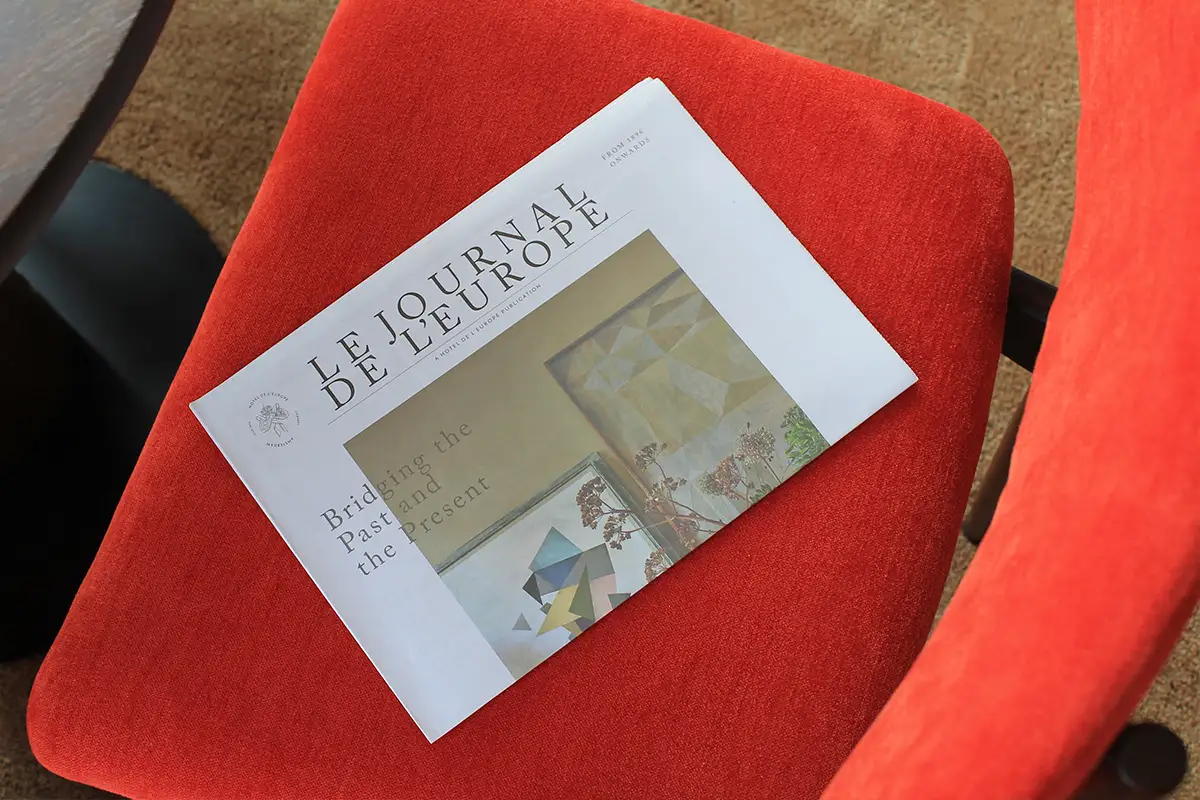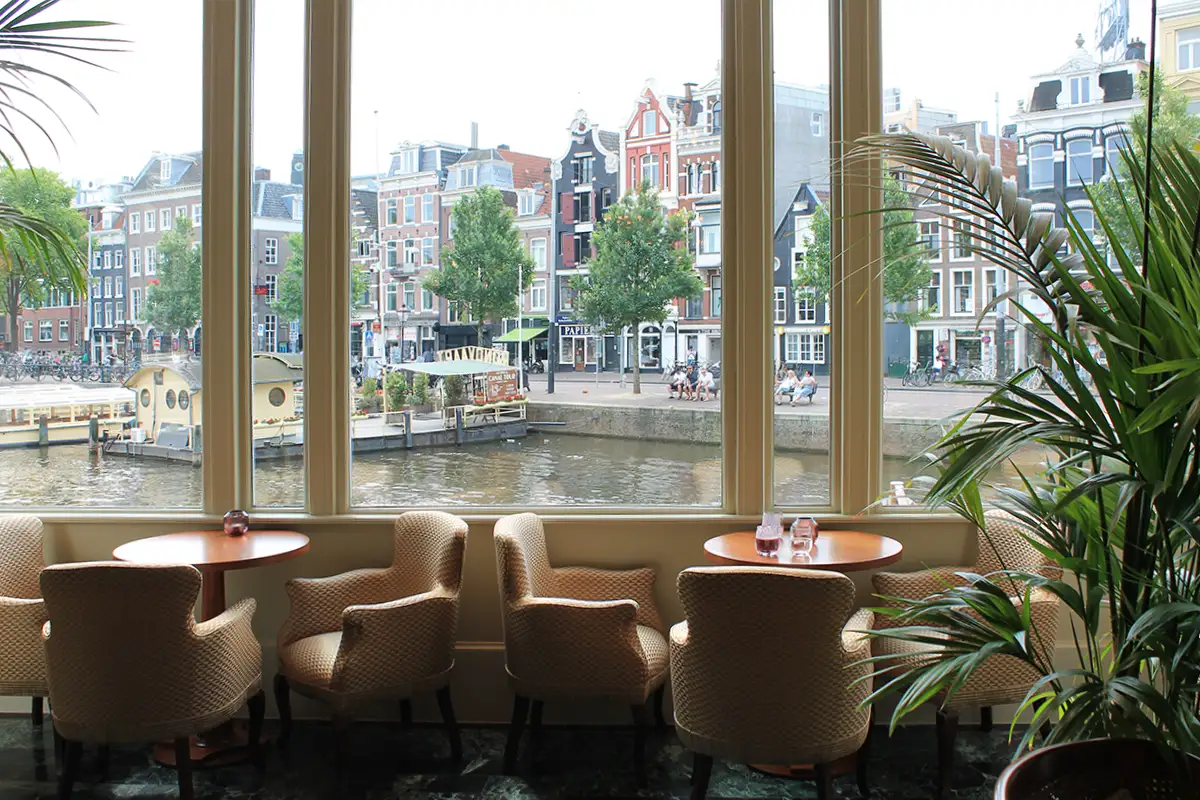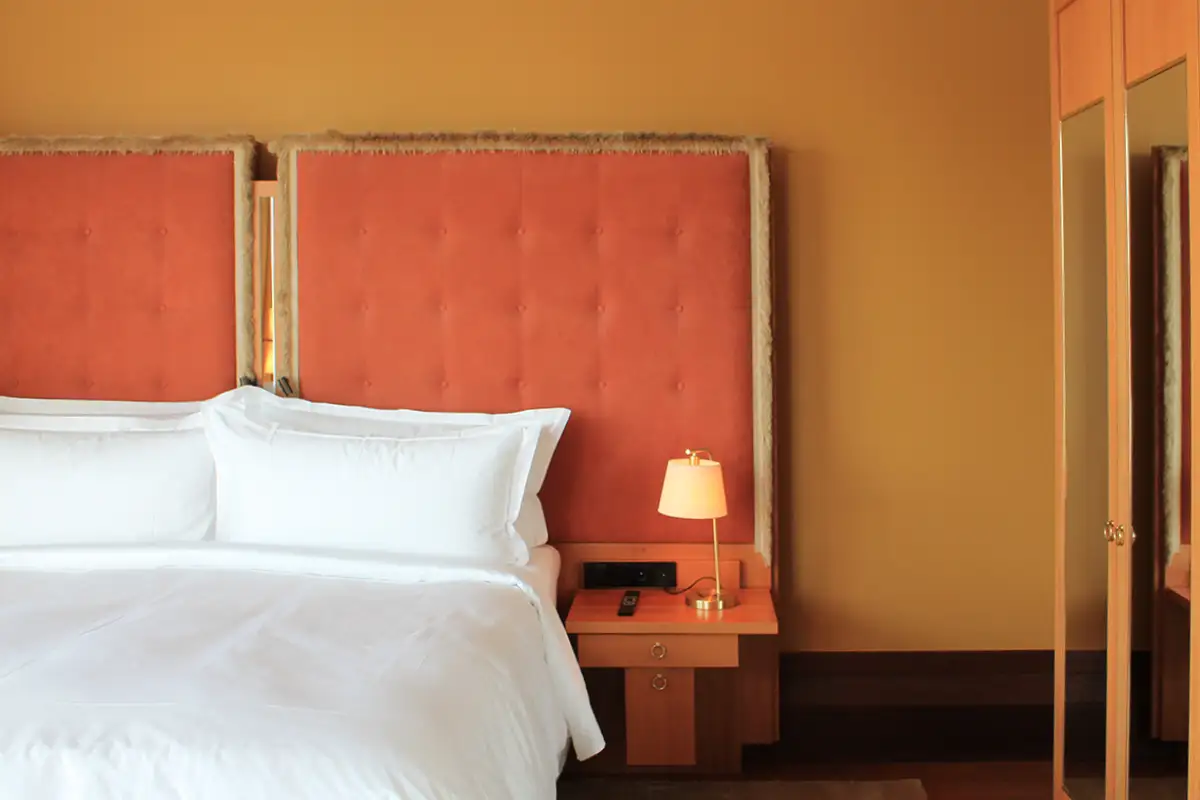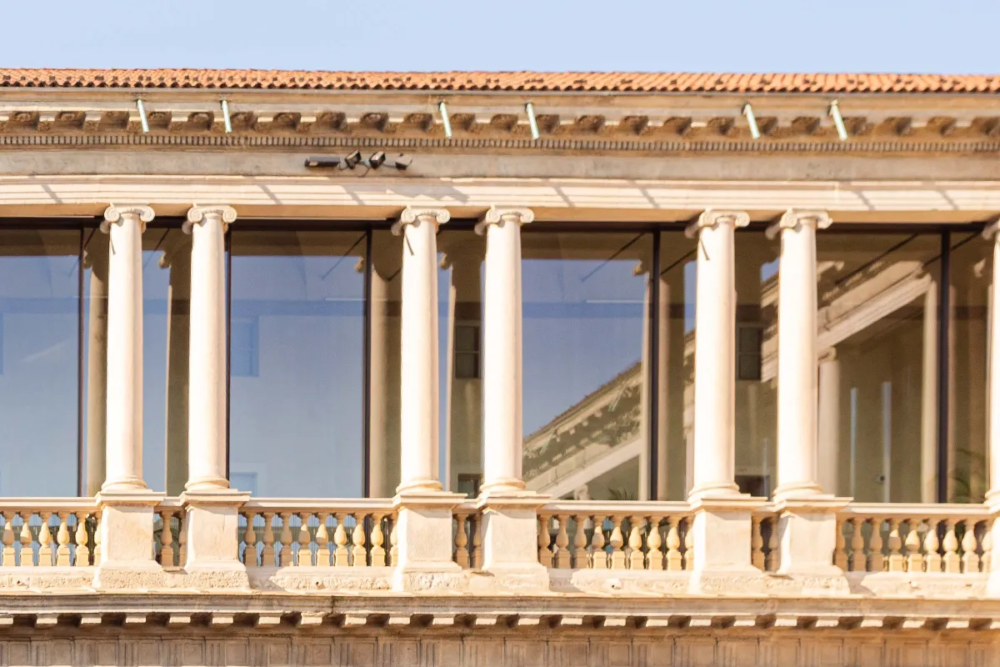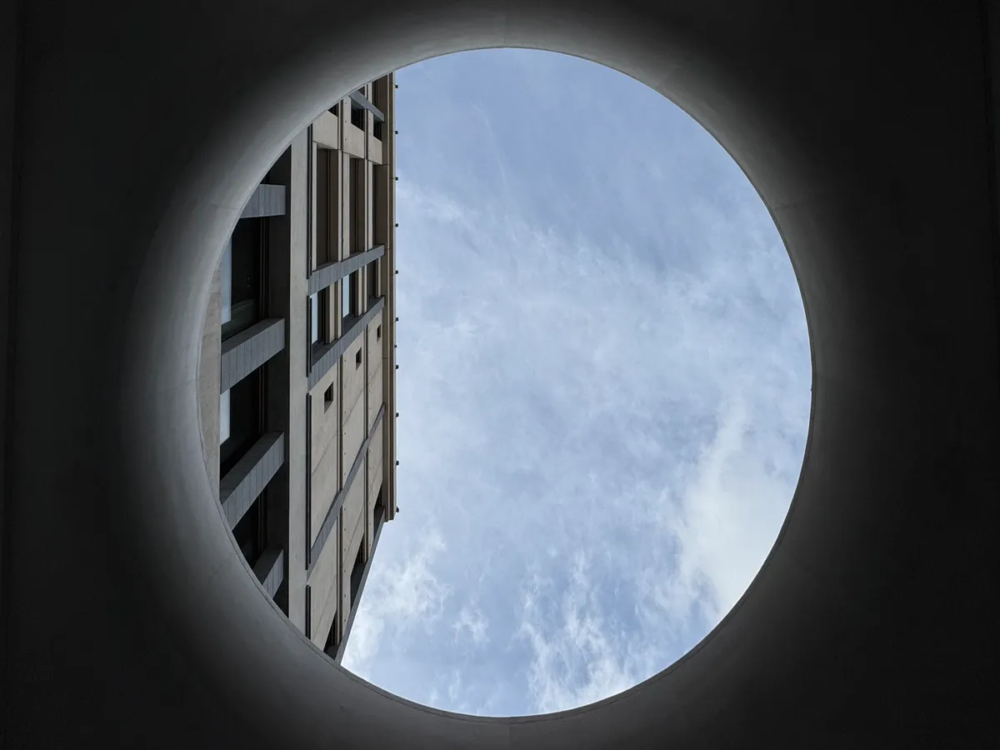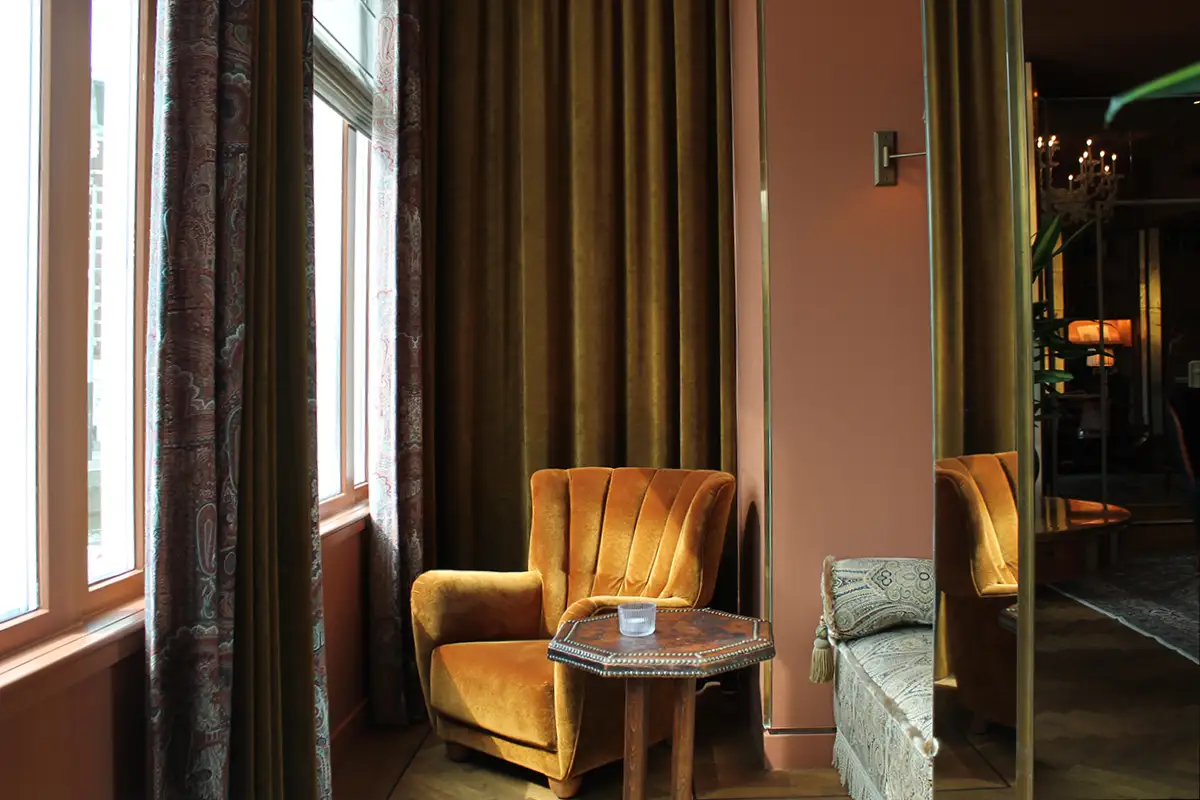
De L’Europe, Amsterdam: 620 piles of red bricks and natural stone
Het Rondeel stood in the center of Amsterdam as a reminiscence of protection for the city, until it was transformed into a hospitality building – today French antiques sit alongside abstract sculptures
De L’Europe Amsterdam: a hotel on the banks of the Amstel River
While walking on the banks of the Amstel, the river that crosses the city of Amsterdam, reaching the height of Rembrandtplein (Rembrandt Square) – one of the main hubs of the Dutch capital’s nightlife – when the river winds in two arms, it is easy to notice a building towering in the water.
It is Hotel De L’Europe. With its neoclassical façade composed of 620 piles of red bricks and natural stone, windows and terraces facing the Amstel, in the city center of Amsterdam. A pillar hiding centuries of history and guarding the city, surrounded by the passersby and the nightlife of the Dutch capital.
De L’Europe Amsterdam: a story dating back to the 15th Century
The history of the foundations on which Hotel De L’Europe stands today, dates back to the 15th Century. Back then the city of Amsterdam stood in the middle of the fields, protected only by the canal surrounding the settlement. In 1482, to increase protection from external attacks, the citizens decided to build a fortress wall around the city. Het Rondeel, one of the watchtowers – built in 1535 – stood in the precise spot where De L’Europe is today.
For decades Het Rondeel stood there, a memory of protection for the city, until it was seen as the first hint of a building dedicated to hospitality. It is the year 1638 and a man named Mr. Jordan decides to build an inn on the foundations of the fort. At the end of the century, the property was expanded, leading to the construction of the first Renaissance elements that can be seen today.
Between the 1700s and 1800s, the property passed through many hands, with renovations awarding it the title of ‘Gentlemen’s Inn of Distinction’.
More than 125 years of history for the De L’Europe, which opened its doors in 1896
It was in 1895, shortly after another renovation in 1883 – on the occasion of the World Fair in Amsterdam – that the construction of Hotel De L’Europe started. A year later, the hotel designed by architect W. Harmer was inaugurated. The new facility included fifty guest rooms, an event space, a café with outdoor terrace overlooking the river, the Muntkamer dinner hall, and all the modern facilities such as an elevator, central heating, gas, and electricity.
The property underwent renovation processes over the course of the 20th Century, including the addition of the two adjoining buildings, numbers 6 and 8, in 1986, a century after the opening.
In anticipation of its 125th anniversary, which took place in 2021, the Amsterdam-based interior studio, Nicemakers, took care of the refurbishment of the ground floor. The redesign is the one visible today, including a bookstore curated by Mendo, a flower shop, and three restaurants (a brasserie, a trattoria, and the fine dining, Flore).
The renovation process by Amsterdam studio Nicemakers at De L’Europe
«We tried to retain some elements that we felt were worth keeping» illustrates Lotti Lorenzetti, Head of Design at Nicemakers when interviewed for Le Journal De L’Europe. In studying the redesign of the 97 rooms that make up the upper floors of the De L’Europe, Nicemakers decided to go with a ‘Classic design with a modern touch’, starting with the elements that characterize the structure’s past and connection to the city of Amsterdam, and combining them with new contemporary elements.
The goal was to maintain an eclectic style, a trait that unifies the entire property. Classic elements, such as the curtains framing the beds and the velvets of the headboards are combined with vintage pieces, hand-picked objects from around the world, and local art pieces made by artist Patrick van-Riemsdijk. «We had to think of how to make all these different spaces unique but also cohesive».
[envira-gallery id=”131734″]
An eclectic style mixing tradition and contemporaneity
The eclectic style that characterizes the entire property is visible since entering the ‘t Huys’ grand lobby, where 17th Century artworks contrast with some pieces of modern furniture. As stated in Le Journal De L’Europe, chandeliers hang from the ceilings alongside velvet armchairs and mid-century lamps, as well as being filled with Dutch art from the Heineken family, «French antiques sit alongside abstract sculptures».
The overabundance of styles and elements is condensed into The Wunderkammer atelier, a space curated by Florian Seyd and Ueli Signer, who have assembled together a collection of curiosities that the two have gathered over the years.
Guests can also access the library-inspired bookstore at the ground floor, curated by Mendo, the Amsterdam-based independent publishing house and neighboring bookstore. There, in a space that recalls an old library, it is possible to browse self-published and curated titles while sitting on mid-century armchairs.
A culinary melting pot – the three restaurants at De L’Europe. Flore, Conscious Fine Dining
When it comes to dining at De L’Europe – aside from Freddy’s Bar (dedicated to the Dutch entrepreneur who exported the eponymous beer around the world, who used to hang out at the bar) – guests have three options.
They can either eat at the Italian restaurant Trattoria Graziella, taste French flavors at Marie, the waterfront brasserie, or at the latest addition, Flore.
Flore was born during the Covid-19 pandemic, under the direction of the Michelin-star chef Bas van Kranen. «We were making takeaway food for around three-hundred people every week, making it as healthy as possible. The only takeaway options for people were fast foods, so we’d have a big table of bio vegetables, adding a small piece of protein to each order, like an organic chicken or piece of fish. The concept [for Flore] all started there, really. I needed to use a similar philosophy in my restaurant, too» recalls van Kranen, about the birth of Flore Le Journal De L’Europe.
Today, the ten-tables restaurant works with ingredients sourced from local biological farms in the development of a ‘conscious fine dining menu’ offer.
Not only is chef Bas van Kranen the youngest Michelin star chef in the Netherlands, but his vision at Flore awarded him the only Michelin Green Star in Amsterdam, reflecting his position towards sustainable practices.
De L’Europe, Amsterdam
Dating back to centuries of history as a hospitality structure in the center of Amsterdam, Hotel De L’Europe is determined to maintain its past alive keeping up with contemporary times. As the area of the city tells the story of the Dutch artists that used to walk those streets and paint – Vermeer’s ‘The Night Watch was painted nearby – De L’Europe aspires to remain a culture-lovers gathering space.
After multiple renovation processes over the years, the last of which was directed by Amsterdam-based interior studio, Nicemakers, De L’Europe nowadays offers 97 refurbished guest rooms (including 48 suites, a Presidential Loft, and a six-bedroom Royal Penthouse), the new ‘t Huys’ lobby with champagne lounge, three restaurants and a bar, The Wunderkammer atelier, a bookshop, and a SPA.
Anna Polgrossi
